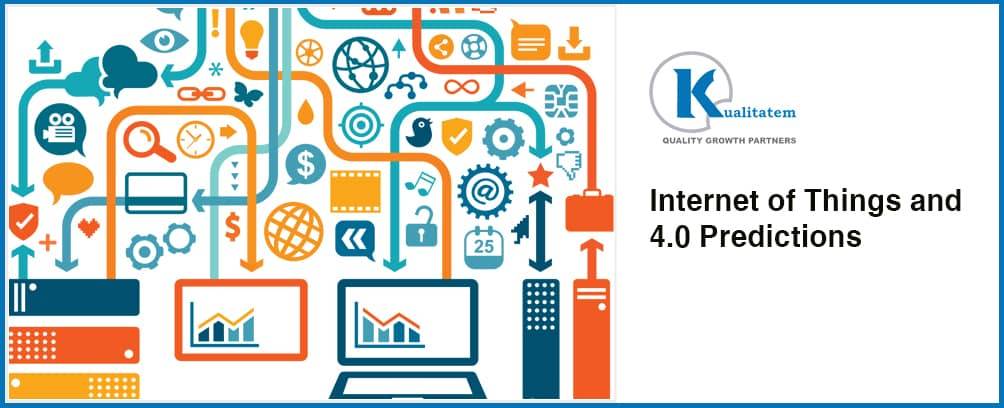Internet of Things (IoT) and 4.0 Predictions

- November 5, 2015
- admin
What IoT is All About?
Internet of Things (IoT) is the future of internet. It is a network of worldwide IP-connected computers and machines. This network of objects contains software, network connectivity and electronics which help these objects to collect and exchange information and data. IoT allows remote access across existing network infrastructures. This allows for a more direct interaction between the virtual world and the physical world.
Is it the New Revolution?
The IoT is spearheading the dawn of the new industrial revolution. Areas like unidirectional decision making, embedded software and social networking are merging the physical and virtual worlds. IoT is the point where both worlds meet. The new leaders of the new age have coined the term Industry 4.0 for the platform where Internet of Things meets manufacturing production. Industry 4.0 is the revolution where greater innovation is coming forth from software instead of hardware.
Where do the Facts Lead?
IoT is a revolution of many great facets. This evolution has a lasting impact on present and future manufacturing practices. The internet has simply been added to our life and IoT is something we rely on for everything. In order to ensure its credibility, it certainly needs to be tested.
What is the Key?
It is no hidden fact that when it comes to IoT and Industry 4.0, Software is the key. The following attributes are absolutely necessary for this software to be successful:
- Available: It should be readily available. It should be at the right place, at the right time, and at the right price.
- Certified: It should be verified.
- Compliant: The future brings new standards every day and novel ways of complying with these new standards is critical.
- Flexible: A certain flexibility will be required so that the existing products can deal with the innovation being developed around it.
- Reusable: The re-usability factor is important. Fortunately, there won’t be any need to rewrite the full code every time, for every product, for every version, for every product variant.
- Reliable: The software should always deliver, anywhere, anytime and in any situation.
- Secure: One must ensure software security.











